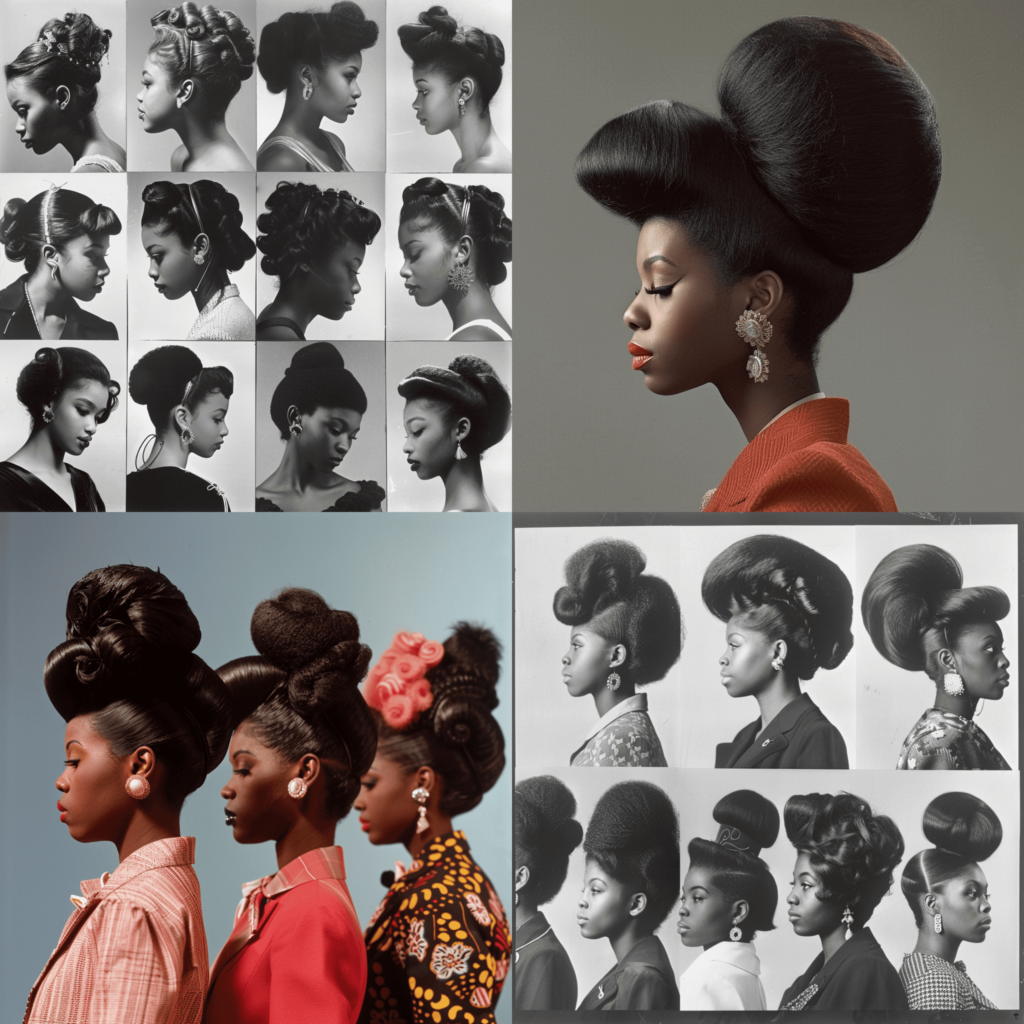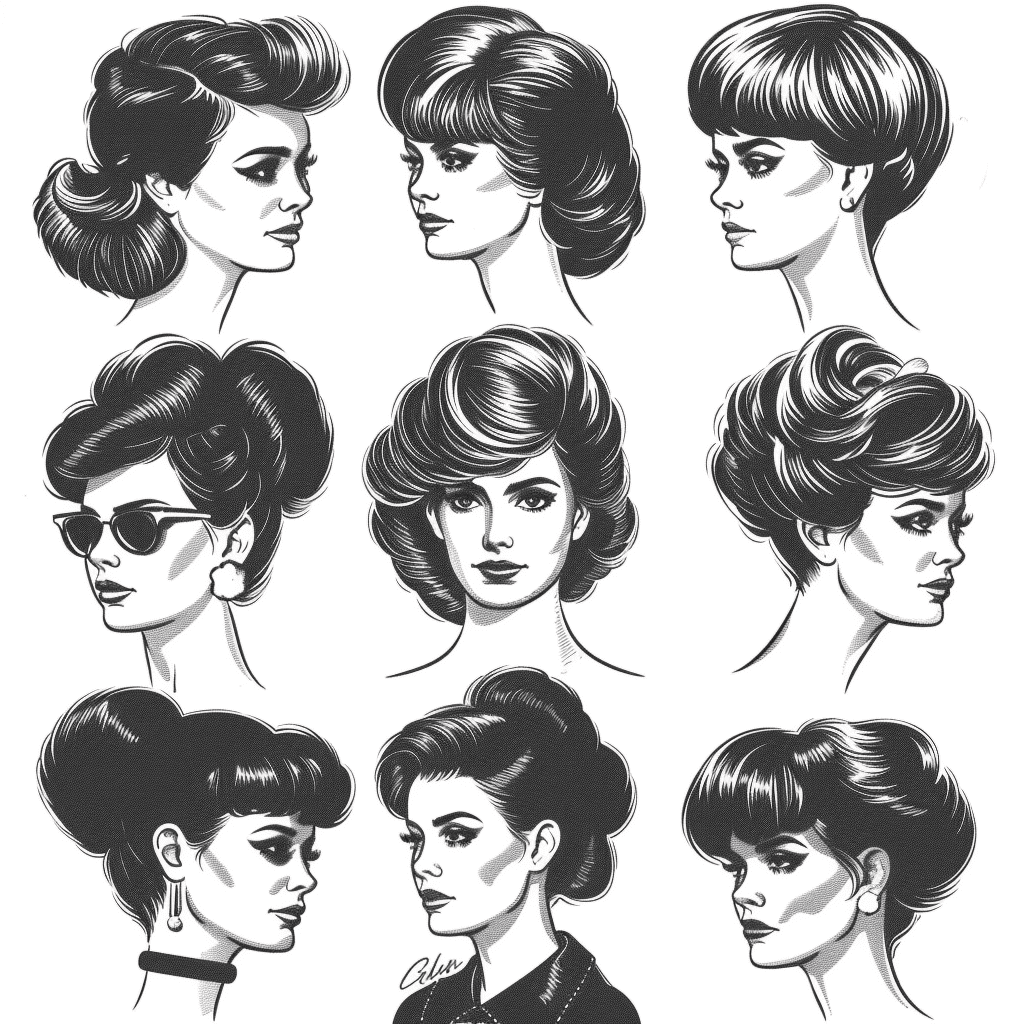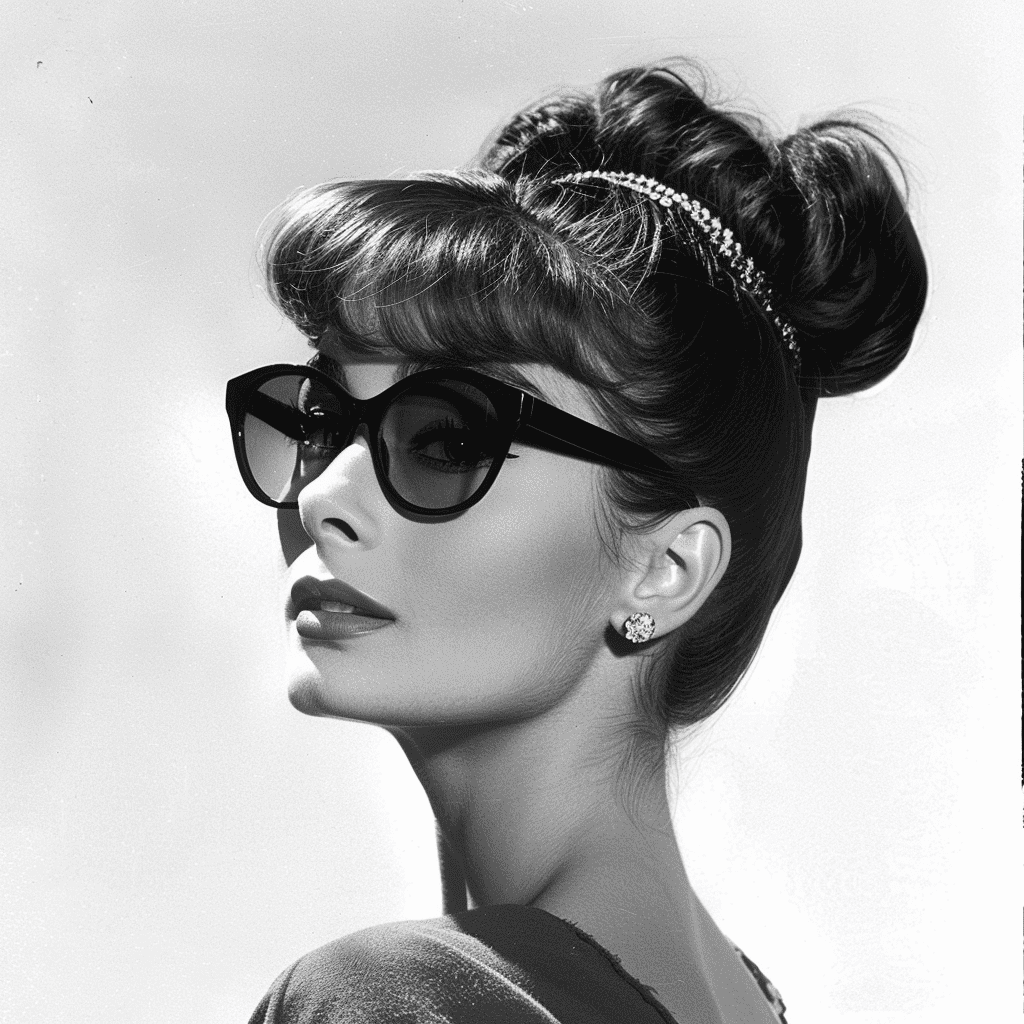Were the Most Iconic and Expressive Hairstyles of the 1960s?
The 1960s was a decade where hairstyles transcended mere fashion, becoming powerful symbols of personal expression and cultural identity. Are you curious to discover how these 60s hairstyles, both male and female, defined an entire era?
The 1960s introduced iconic hairstyles such as the Beehive, Afro, and Pompadour. These hairstyles not only mirrored the daring and expressive fashion of the era but also significantly influenced the identity and culture of the decade.
Let’s explore these classic 1960s hairstyles, both for long hair and short, and discover what made each one a defining feature of the decade.

What Was the Most Popular Hairstyle in the 1960s?
The Beehive was not just a hairstyle; it became the quintessential look of the 1960s, defining the decade’s fashion scene. For women, especially those with long hair, this style was a must-try.
The Beehive, known for its intricate and towering design, was the top choice among 60s hairstyles female. It captured the era’s adventurous essence and became synonymous with the glamorous, bombshell hairstyle 1960s. Celebrities such as Audrey Hepburn and The Ronettes popularized this style, elevating it to one of the most iconic looks of the 1960s. Often complemented with headbands, the Beehive enhanced its height and sophistication, making 60s hairstyles with headbands a popular trend. This style was particularly favored by those with long hair, solidifying its place among 1960s hairstyles for long hair and 60s hairstyles female long hair.

What Was the Most Popular Hairstyle in 1967?
In 1967, the Afro surged in popularity, emerging as a potent symbol of cultural pride and social change. This hairstyle transcended being a mere trend; it served as a declaration of identity, particularly among African Americans, and stood as an emblem of the Civil Rights Movement.
By 1967, the Afro emerged as the predominant hairstyle, serving as a powerful statement of identity and cultural pride amidst major social unrest. Embraced by both men and women, its natural, voluminous form became a hallmark of hairstyles of the 60s and 70s. Influential figures like Angela Davis and Jimi Hendrix propelled the Afro into popular culture, cementing it as a lasting symbol of the era that surpassed mere long hair trends.
Why Was Big Hair Popular in the 60s?
Big hair in the 1960s wasn’t just a trend; it was a bold fashion statement reflecting the era’s love for extravagance and individuality. The bigger the hair, the more one stood out, capturing the essence of the decade’s style.
The popularity of big hair in the 1960s epitomized the era’s affinity for daring, exaggerated styles that conveyed individuality and glamour. This trend encompassed both male and female hairstyles, with men donning the voluminous Pompadour and women showcasing towering Beehives and Bouffants. These full-bodied styles, often demanding extensive teasing and copious amounts of hairspray, exemplified the extreme measures individuals would take to attain the ideal look, epitomizing the bombshell hairstyle 1960s. Accessories like headbands were also prevalent, especially in 60s hairstyles female, adding an extra flair to already dramatic looks.

What Is a Men’s Pompadour Haircut from the 1960s?
The men’s Pompadour of the 1960s symbolized style and confidence, favored by influential figures who shaped the fashion of the decade. This sleek yet bold hairstyle encapsulated the cool, rebellious ethos of the era.
The men’s Pompadour haircut in the 1960s showcased a voluminous top with slicked-back sides, capturing the cool, rebellious essence of the era. As one of the most iconic and expressive 1960s hairstyles male trends, it was popularized by rock and roll legends such as Elvis Presley and James Dean. Achieving the Pompadour required meticulous grooming, involving sweeping the hair upwards and backwards. This standout style from the 1960s became a symbol of masculinity and rebellion, leaving a lasting impact on men’s fashion for years to come. It addressed the question, “What were the most iconic and expressive hairstyles of the 1960s male?” by highlighting the Pompadour’s significant role.


Conclusion
The hairstyles of the 1960s were more than just trends; they were powerful expressions of the decade’s unique culture and continue to influence fashion today. From towering Beehives and elegant 60s hairstyles female long hair adorned with headbands to bold Afros and rebellious Pompadours, these styles encapsulated the spirit of their times. The hairstyles of the 60s and 70s not only reflected fashion but also told stories of societal shifts, personal identity, and cultural movements. Feel free to adjust any part further if needed!

